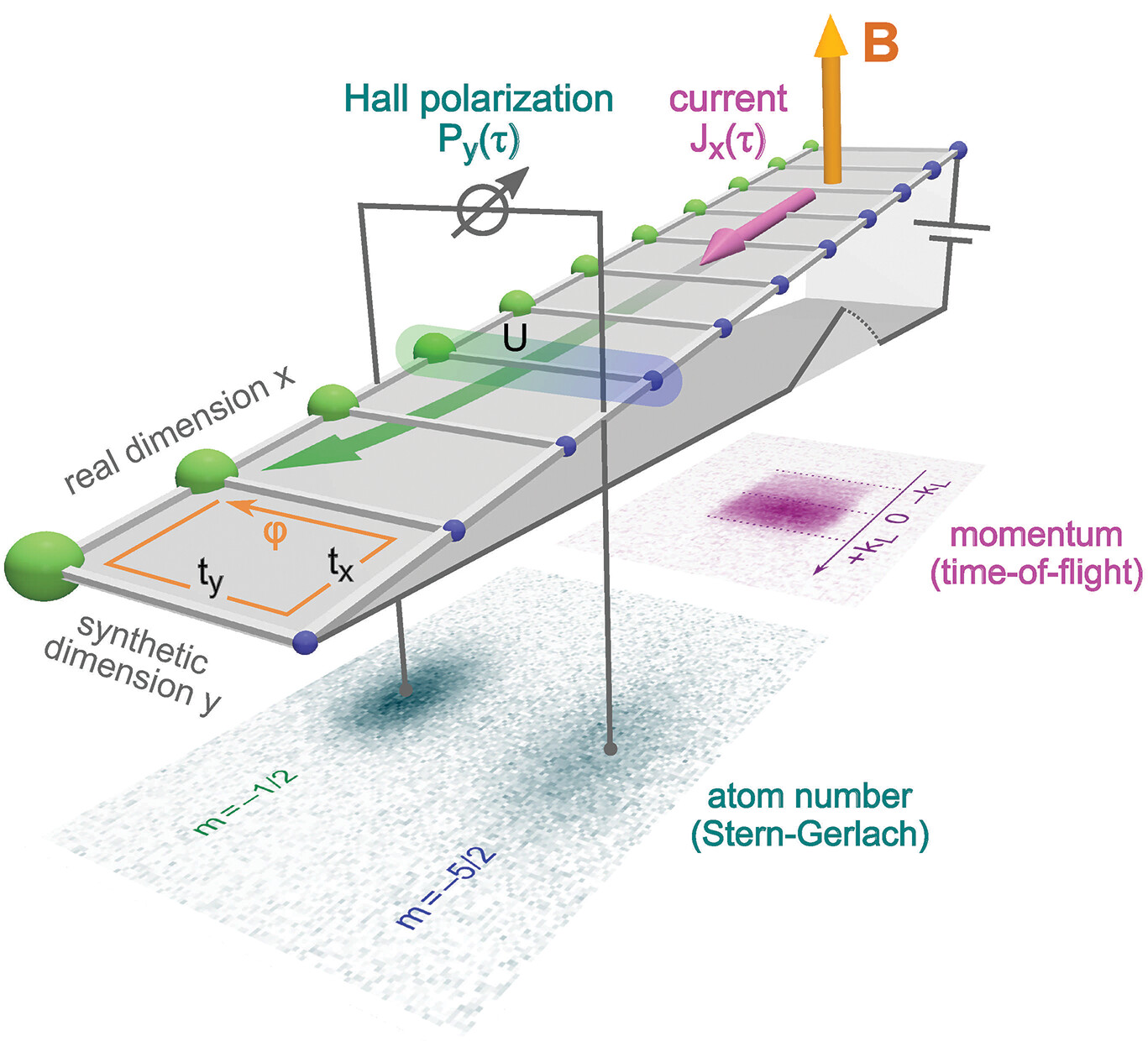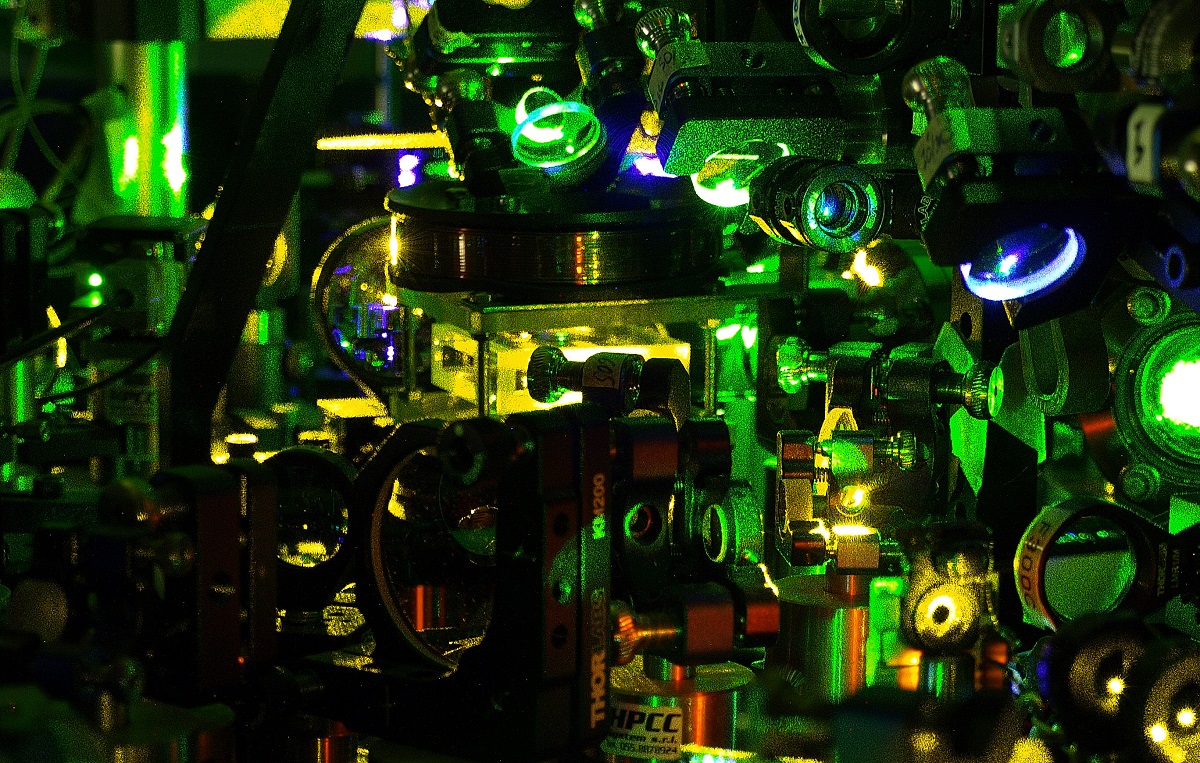Original text reproduced by kind permission of the University of Geneva.
Theoretical works done at the University of Geneva, in the groups of Thierry Giamarchi and Michele Filippone (CEA/IRIG/MEM/L_SIM), had predicted a remarkable behavior for particles put under a magnetic field, when their interactions became strong. Testing such a theoretical prediction in a real quantum system was, however, not an easy task.
Bending the motion of atoms with laser light allowed to solve a mystery that has lasted more than 40 years.
A team of researchers at the University of Florence, engineered a laboratory system that allowed them to "see" in real time how current is bent by the magnetic field, in a regime of strong interaction between charges never previously studied.
The results of the experiment, carried out in the frame of the ERC Consolidator Grant TOPSIM research project have been published in the scientific journal Science (cf link below). The experiment, carried out at the University of Florence in collaboration with the European Laboratory for Nonlinear Spectroscopy (LENS), also involved researchers from the National Institute of Optics of the National Research Council and the universities of Geneva and Grenoble.
The experimental system built in Florence is a quantum simulator, that is, a "dedicated" quantum computer designed with the aim of reproducing the quantum effect of interest. The results are extremely promising for studying the microscopic origin of the quantization of the Hall effect, which - 40 years after its discovery - is still in search of a complete theoretical interpretation.
The Hall effect is a physical phenomenon whereby an electric current, when it flows within a material in the presence of a magnetic field, rather than moving in a straight line, it "bends" and results in a buildup of electric charges at the edges. This effect is the basis of widespread techniques for characterizing materials and is used in the most common devices for measuring magnetic fields, such as those found in our cell phones.
The experimental team, rather than working with conventional materials, was able to engineer a "prototype" material in the laboratory where neutral atoms, cooled to a few billionths of a degree above absolute zero, play the role of electrons.
By manipulating atoms with laser light, the researchers were able to make them behave like charged particles in the presence of an "artificial" magnetic field and to precisely observe how atomic trajectories were bent by the field. For the first time, the Hall effect was measured as the interactions between the particles were varied, confirming the above mentioned theoretical predictions.

Figure 1: Observation of Hall effect in strongly interacting Fermions (by courtesy of
Science journal)
In addition, the theorists at the Universities of Geneva and Grenoble were also involved in the design of the experiment, and the interpretation of the results.
This research will also be pursued as part of the PNRR initiatives devoted to the development of new quantum technologies.
 Detail of the experimental setup (credit Carlo Sias)
Detail of the experimental setup (credit Carlo Sias)